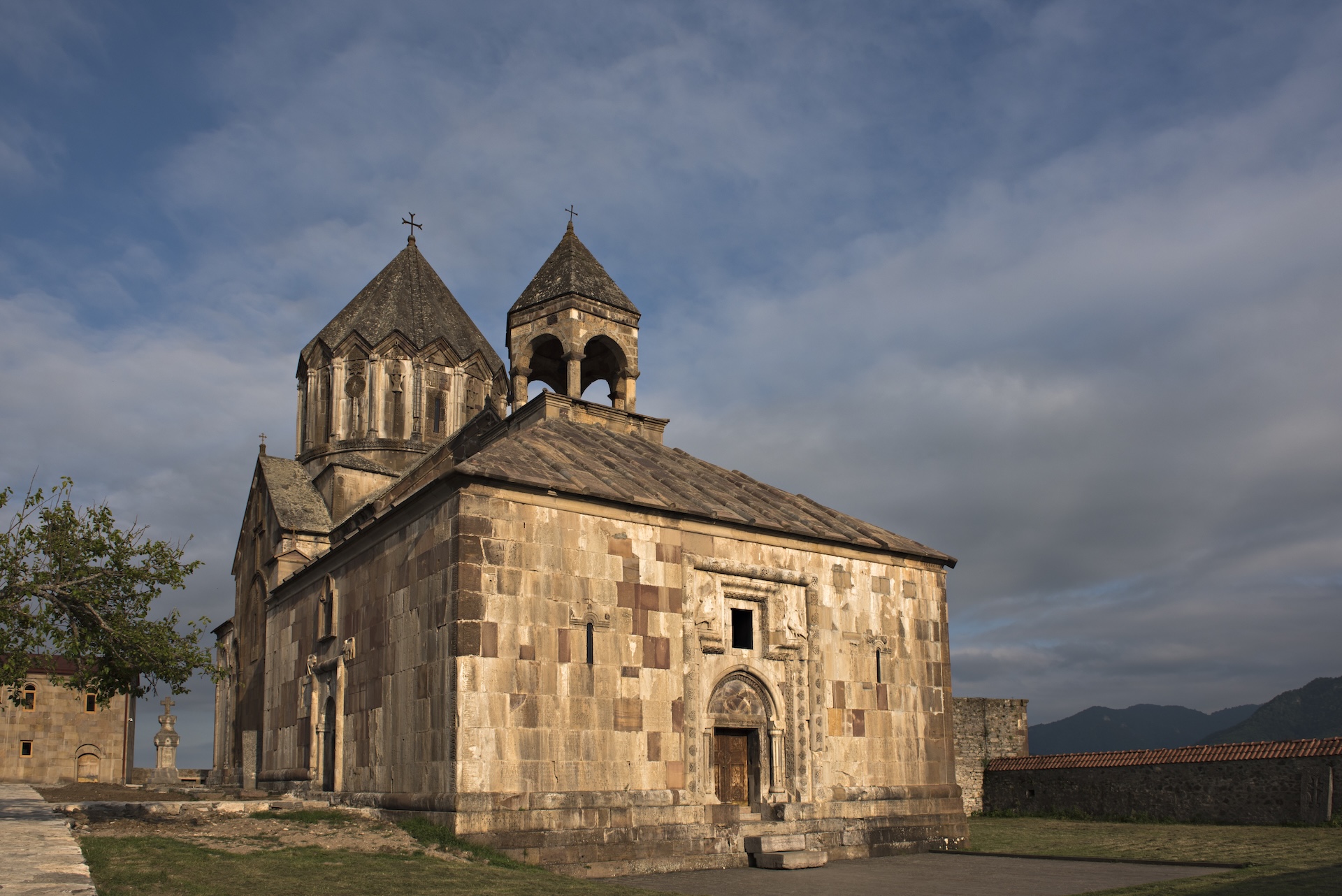
Built in the early 13th century, the Gandzasar Monastery is among the finest achievements of Armenian medieval art, particularly due to the richness of its sculpted ornamentation.
Its church is dedicated to Saint John the Baptist, as legend has it that the saint’s head, severed on the orders of Governor Herod Antipas at Salome’s request, was buried there during the Crusades. Its picturesque cone-shaped dome, known as an “umbrella crown,” is a style of dome popular in Armenia since the 11th century. In the foreground stands the “gavith”, a kind of vestibule, typical of Armenian monastic architecture of the period.
As with all the iconic monuments of the region, Azerbaijan now claims that Armenia has desecrated and damaged it to claim it as its own, falsely attributing its origins to the Albanians or Caucasian Albanians. This was a people who lived in the region during the first millennium, the majority of whom were Islamised during the Arab conquest of the 7th century, although a minority remained Christian. Baku capitalises on the fact that Gandzasar was once the seat of the Patriarch of Caucasian Albania. However, in reality, the Albanian Christian Church always remained under the aegis of the Armenian Church and even adopted its language. The presence of this patriarchal seat and the Armenian identity of the monastery are therefore entirely compatible.
Severely damaged during the first Nagorno-Karabakh war, the church had been restored. Until 2020, the monastery was still active and considered one of the spiritual centres of the region. For instance, in 2008, during the “grand wedding” – the simultaneous union of nearly seven hundred Armenian couples – while most chose the cathedral in Shushi, the former regional capital, around 130 opted for Gandzasar. This happy memory contrasts with the present situation of the monastery, shrouded in silence, and that cannot be approached, its entrance being permanently locked.